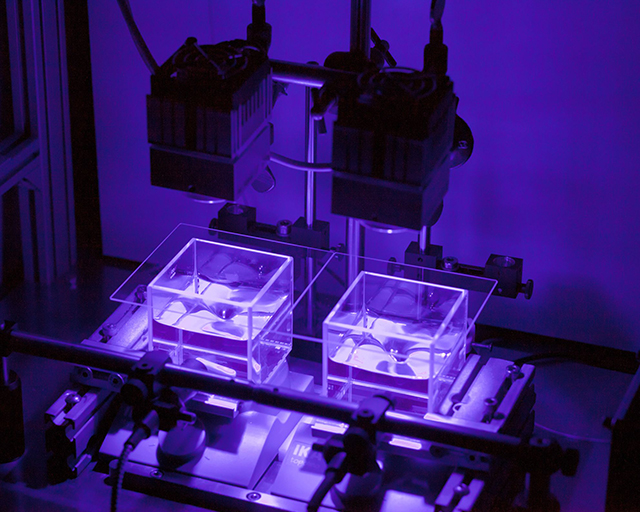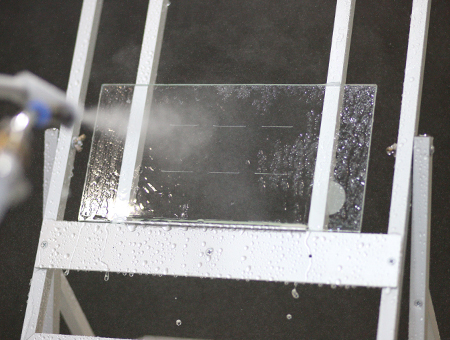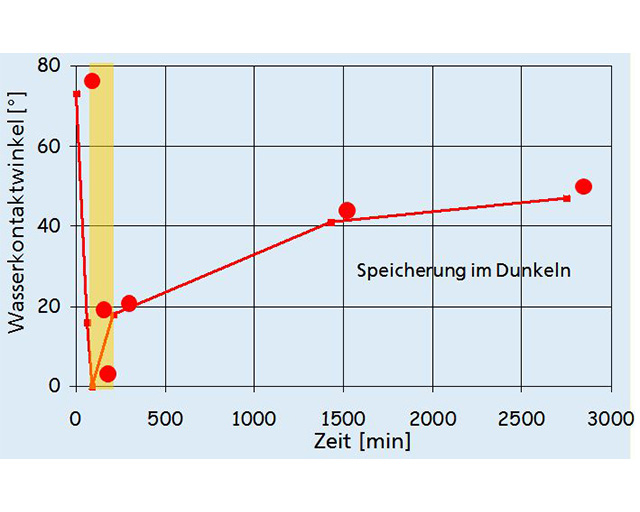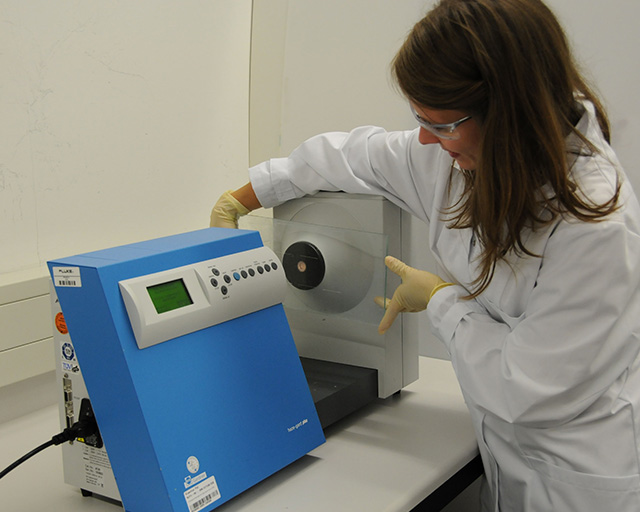
Determination of the self-cleaning effect of photocatalytically active materials and surfaces

Determination of the self-cleaning effect of photocatalytically active materials and surfaces
Photocatalytic self-cleaning is based on two different mechanisms, which work in synergy to enable an effect that aids cleaning. The direct oxidation of contaminants leads to dirt removal, which is enhanced by the effect of superhydrophilicity on the catalytically active surfaces in contact with water (easy-to-clean effect). The Fraunhofer IST has various methods for detecting and quantifying the cleaning behavior of photocatalytically active products. In the field of photocatalytic self-cleaning, the institute offers a broad portfolio of suitable measurement techniques for its qualification.
A wide range of standard-compliant and customer-specific test procedures for photocatalytic self-cleaning
The Fraunhofer IST has various methods for detecting and quantifying the cleaning effect of photocatalytically active products within the framework of the following test procedures:
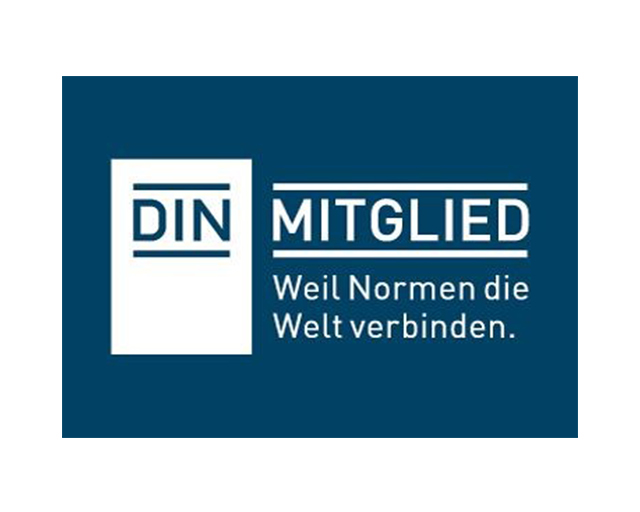
- Degradation of methylene blue (ISO 10678, DIN 52980)
- Dirt test (DIN EN 1096-5)
- Determination of the water contact angle (ISO 27448, ISO 19810)
- Fatty acid degradation
In addition, the Fraunhofer IST offers its customers the possibility of establishing their own customer-specific test procedures and supports partners in transferring these procedures to industrial application or for the purpose of later scaling or standardization.
Determination of photocatalytic activity by degradation of methylene blue in accordance with DIN 52980/ISO 10678
To characterize photocatalytically active surfaces with respect to their activity for the degradation of organic molecules, a sample is brought into contact with methylene blue in aqueous solution and irradiated with UV light. The decrease in the dye content of the solution is continuously determined during the test by means of UV/Vis spectroscopy, so that in conclusion a statement concerning the photocatalytic activity can be made.
Determination of the self-cleaning behavior of coated glass surfaces – Dirt Test in accordance with DIN EN 1096-5
The dirt test method is used to determine the self-cleaning effect of coated glass surfaces under artificial weathering. For this purpose, model dirt is applied to the specimen with the aid of a spray nozzle. This is followed by alternating UV irradiation and spraying with water to simulate sun and rain. The degradation of the dirt solution is determined by a haze meter throughout the test and is considered a measure of the cleaning effect of the surfaces.
Determining photocatalytic activity by measuring the contact angle in accordance with ISO 27448
Determining photocatalytic mineralization performance by degradation of fatty acid
In this test method, a fatty acid is applied to the photocatalytically active sample so that a thin turbid film is formed. UV(A) irradiation decomposes the fatty acid and mineralizes it completely to H2O and CO2. The photocatalytic mineralization conductivity of the sample can then be determined by means of scattered light measurement or directly via the CO2 produced during the degradation reaction.
